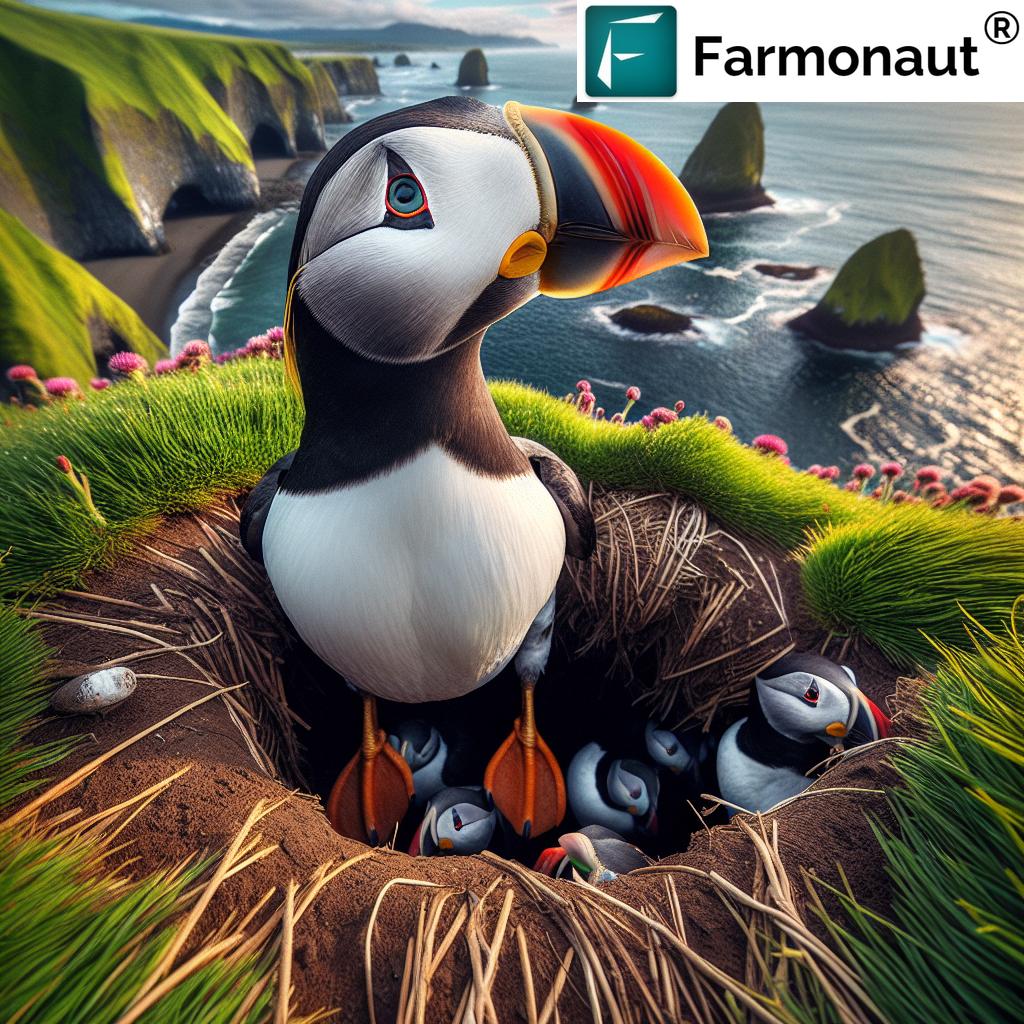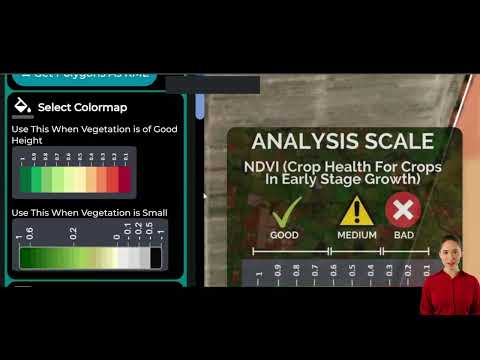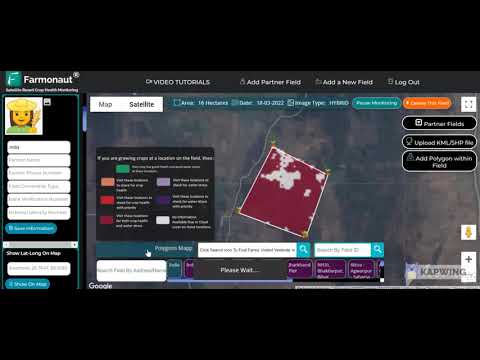Discover Tufted Puffins: Oregon Coast’s Returning Sea Birds at Cannon Beach’s Haystack Rock
“Tufted puffins dig impressive burrow nests up to 6 feet deep in Haystack Rock’s soft soil.”
As we eagerly anticipate the return of spring along the breathtaking Oregon coast, a remarkable natural spectacle is about to unfold. The tufted puffins, those charismatic sea birds with their distinctive beaks and charming personalities, are set to make their annual journey back to Cannon Beach’s iconic Haystack Rock. This event marks the beginning of the puffin nesting season, a time of wonder and excitement for wildlife enthusiasts and beach-goers alike.
In this comprehensive guide, we’ll explore the fascinating world of tufted puffins, their nesting habits, and the unique opportunity to witness these captivating creatures in their natural habitat. We’ll delve into the best times for sea bird watching, the conservation efforts in place, and the myriad of Oregon beach attractions that make this coastal experience truly unforgettable.
The Majestic Return of Tufted Puffins to the Oregon Coast
Every year, as winter fades and spring blossoms, the Oregon coast becomes a hub of activity as tufted puffins make their highly anticipated return. These remarkable sea birds spend most of their lives on the open water, making their annual visit to the coast a rare and cherished event for wildlife observers.
Haystack Rock at Cannon Beach stands as a testament to nature’s ingenuity, providing the perfect nesting ground for these feathered visitors. The soft soil of this coastal landmark creates an ideal environment for the puffins to construct their intricate burrow nests, a fascinating process that we’ll explore in detail.

Understanding Tufted Puffins: Oregon’s Coastal Treasures
Tufted puffins (Fratercula cirrhata) are a species of auk native to the North Pacific Ocean. These charming birds are easily recognizable by their distinctive features:
- A large, colorful beak that changes hue during breeding season
- Striking black and white plumage
- Distinctive golden plumes that give them their “tufted” name
These sea birds are well-adapted to life both in the water and on land. Their wings are designed for powerful underwater swimming, allowing them to dive up to 60 meters in search of small fish and squid. On land, they waddle with an endearing gait that has captured the hearts of many observers.
The Journey to Haystack Rock: A Puffin’s Tale
The journey of tufted puffins to Haystack Rock is a remarkable feat of nature. These birds spend the majority of their lives at sea, only returning to land for the breeding season. Their arrival at Cannon Beach marks the beginning of a crucial period in their life cycle.
Haystack Rock, with its towering presence and unique geological features, provides the ideal nesting site for these sea birds. The rock’s soft soil is perfect for “burrow nesters” like the tufted puffin. As Kelli Ennis from the Haystack Rock Awareness Program explains:
“They pick these really high cliffsides that have this soft soil that they can burrow with their beaks in, and those burrows are anywhere from 4 to 6 feet deep. Then they lay a single egg in it, and it gives them a really nice protected area.”
This natural fortress offers protection from predators and the elements, ensuring the best possible start for the next generation of puffins.
Puffin Nesting Season: A Marvel of Nature
The puffin nesting season is a fascinating period that offers unique insights into the life cycle of these remarkable birds. Here’s what you can expect during this time:
- Arrival (April-May): Puffins begin to return to Haystack Rock, scouting for suitable nesting sites.
- Nest Building (May-June): Using their strong beaks, puffins dig deep burrows into the soft soil of Haystack Rock.
- Egg Laying and Incubation (June-July): A single egg is laid and both parents take turns incubating it for about 45 days.
- Chick Rearing (July-August): Once hatched, the puffling (baby puffin) is cared for by both parents, who take turns fishing to feed their young.
- Fledging (August-September): The young puffins leave their nests and head out to sea, where they’ll spend the next few years before returning to breed.
This cycle of life plays out against the backdrop of Oregon’s stunning coastline, offering visitors a chance to witness one of nature’s most captivating displays.
Best Time to See Puffins: Planning Your Visit
For those eager to witness the tufted puffins in action, timing is crucial. The best time to see puffins at Haystack Rock typically spans from spring through summer, with peak activity occurring between May and August.
Here’s a month-by-month breakdown to help you plan your visit:
| Month | Puffin Activity | Visitor Experience | Conservation Tips |
|---|---|---|---|
| April | Early arrivals begin | First sightings possible | Keep distance, use binoculars |
| May | Nest building in full swing | ‘Welcome the Puffins Celebration’ | Stay on designated paths |
| June | Egg laying and incubation | Peak viewing times | Avoid loud noises |
| July | Chicks hatching | Increased puffin activity | Do not feed wildlife |
| August | Chick rearing and fledging begins | Last chance for peak season viewing | Pack out all trash |
| September | Late fledging, puffins begin to depart | Fewer sightings, quieter beaches | Report any distressed birds |
Remember, the puffins’ schedule can vary slightly from year to year, so it’s always a good idea to check with local wildlife organizations for the most up-to-date information.
The ‘Welcome the Puffins Celebration’: A Community Event
“Cannon Beach’s annual ‘Welcome the Puffins Celebration’ attracts thousands of visitors to observe these charismatic seabirds.”
One of the highlights of the puffin nesting season is the annual ‘Welcome the Puffins Celebration’ hosted by the Haystack Rock Awareness Program. This year, the event is set to take place on April 13th, marking the official start of the puffin watching season.
During this celebration, visitors can expect:
- Expert interpreters on site to provide information about puffins and their habitat
- Binoculars and scopes available for close-up views of the birds
- Educational activities for children and adults alike
- A chance to learn about conservation efforts and how to protect these beloved sea birds
This event not only offers a unique opportunity for sea bird watching but also fosters a sense of community and shared appreciation for Oregon’s coastal wildlife.

Puffin Conservation: Protecting Oregon’s Coastal Wildlife
The return of tufted puffins to the Oregon coast is not just a spectacle for visitors; it’s a crucial part of the local ecosystem. However, like many sea birds, puffins face numerous challenges in the modern world. Conservation efforts are essential to ensure their continued presence along our coasts.
Some of the threats facing tufted puffins include:
- Climate change affecting ocean temperatures and food availability
- Plastic pollution in the oceans
- Human disturbance of nesting sites
- Predation by introduced species
Organizations like the Haystack Rock Awareness Program play a vital role in puffin conservation. Their efforts include:
- Monitoring puffin populations and nesting success
- Educating visitors about responsible wildlife viewing
- Conducting research to better understand puffin behavior and needs
- Advocating for policies that protect marine habitats
By supporting these conservation initiatives, we can help ensure that future generations will have the opportunity to witness the magic of tufted puffins along the Oregon coast.
Beyond Puffins: Exploring Oregon Beach Attractions
While the tufted puffins are undoubtedly a star attraction, the Oregon coast offers a wealth of other natural wonders and activities for visitors to enjoy. Here are some must-see Oregon beach attractions to complement your puffin watching experience:
- Ecola State Park: Located just north of Cannon Beach, this park offers stunning views of the coastline and excellent hiking trails.
- Tide Pools at Haystack Rock: During low tide, explore the diverse marine life in the tide pools at the base of Haystack Rock.
- Oswald West State Park: A paradise for surfers and hikers alike, with beautiful beaches and lush coastal forests.
- Cannon Beach Town: Explore the charming shops, galleries, and restaurants in this picturesque coastal town.
- Tillamook Rock Lighthouse: While not accessible, this offshore lighthouse provides a dramatic backdrop for photos and storytelling.
These attractions showcase the diverse beauty of the Oregon coast, from rugged cliffs to sandy beaches, making your visit to see the puffins part of a larger coastal adventure.
Responsible Wildlife Viewing: Best Practices for Puffin Watching
As we enjoy the privilege of observing tufted puffins in their natural habitat, it’s crucial to practice responsible wildlife viewing. Here are some guidelines to ensure your puffin watching experience is both enjoyable and ethical:
- Keep Your Distance: Use binoculars or spotting scopes to view puffins from afar. Getting too close can stress the birds and disrupt their nesting activities.
- Stay on Designated Paths: Stick to marked trails to avoid damaging sensitive habitats or disturbing nesting sites.
- No Flash Photography: The bright light can startle and disorient birds. Use natural light for your photos.
- Keep Noise to a Minimum: Loud noises can frighten puffins and other wildlife. Speak quietly and enjoy the natural sounds of the coast.
- Leave No Trace: Pack out all trash and avoid leaving any items on the beach that could harm wildlife.
- Respect Closed Areas: Some sections of the beach may be closed to protect nesting sites. Always obey posted signs and barriers.
By following these guidelines, we can ensure that the puffins and other coastal wildlife continue to thrive, allowing future generations to enjoy these magnificent creatures.
The Role of Technology in Wildlife Conservation
In today’s digital age, technology plays an increasingly important role in wildlife conservation efforts, including the protection of tufted puffins and their habitats. Advanced tools and platforms are being used to monitor populations, track environmental changes, and engage the public in conservation initiatives.
One such innovative platform is Farmonaut, a pioneering agricultural technology company that offers advanced, satellite-based management solutions. While primarily focused on agriculture, Farmonaut’s technology has potential applications in wildlife conservation and habitat monitoring.
For instance, Farmonaut’s satellite-based monitoring systems could be adapted to track changes in coastal habitats, helping conservationists identify potential threats to puffin nesting sites. The company’s carbon footprinting tools could also be valuable in assessing the environmental impact of human activities on coastal ecosystems.
By leveraging such technologies, conservation organizations can make more informed decisions and develop targeted strategies to protect vulnerable species like the tufted puffin.
Planning Your Puffin Watching Adventure
Ready to embark on your own puffin watching adventure? Here are some tips to help you make the most of your visit to Cannon Beach and Haystack Rock:
- Timing is Everything: Plan your visit during the peak puffin season (May to August) for the best chances of sightings.
- Check the Tides: Low tide offers the best opportunities for exploring tide pools and getting closer views of Haystack Rock.
- Bring the Right Gear: Pack binoculars, a spotting scope if you have one, and a camera with a good zoom lens.
- Dress Appropriately: Oregon’s coastal weather can be unpredictable. Bring layers and waterproof gear.
- Join a Guided Tour: Consider joining a tour led by local experts for in-depth knowledge and the best viewing spots.
- Stay Informed: Check with the Haystack Rock Awareness Program for up-to-date information on puffin activity and special events.
Remember, patience is key when wildlife watching. Take your time, enjoy the coastal scenery, and savor the experience of seeing these remarkable birds in their natural habitat.
The Broader Impact: Puffins as Indicators of Ocean Health
Tufted puffins are more than just charismatic visitors to our coasts; they serve as important indicators of ocean health. As top predators in marine ecosystems, the well-being of puffin populations can provide valuable insights into the overall health of our oceans.
Researchers and conservationists closely monitor puffin populations, studying factors such as:
- Breeding success rates
- Diet composition
- Migration patterns
- Overall population trends
Changes in these factors can signal broader issues in marine ecosystems, such as overfishing, pollution, or climate change impacts. By protecting puffins and their habitats, we’re not just preserving a beloved species – we’re contributing to the health of our oceans as a whole.
Community Involvement: How You Can Help Protect Puffins
The conservation of tufted puffins and their habitats is not just the responsibility of scientists and wildlife organizations – it’s something we can all contribute to. Here are some ways you can get involved in puffin conservation efforts:
- Volunteer: Organizations like the Haystack Rock Awareness Program often need volunteers for various activities, from educating visitors to helping with research projects.
- Donate: Support conservation organizations financially to help fund their important work.
- Educate Others: Share your knowledge about puffins and the importance of coastal conservation with friends and family.
- Reduce Plastic Use: Many sea birds, including puffins, are affected by plastic pollution. Minimize your use of single-use plastics to help keep our oceans clean.
- Participate in Beach Clean-ups: Join or organize beach clean-up events to remove harmful debris from coastal habitats.
- Support Sustainable Fishing: Choose sustainably sourced seafood to help maintain healthy fish populations that puffins rely on.
By taking these steps, we can all play a part in ensuring the continued presence of tufted puffins along the Oregon coast for generations to come.
The Future of Puffin Conservation on the Oregon Coast
As we look to the future, the conservation of tufted puffins and other sea birds faces both challenges and opportunities. Climate change, ocean acidification, and human activities continue to pose threats to these beloved birds and their habitats.
However, there are also reasons for hope. Increased public awareness, advancements in conservation technology, and growing support for environmental protection are all positive trends that could benefit puffin populations.
Some promising developments in puffin conservation include:
- Expanded marine protected areas along the Oregon coast
- Innovative tracking technologies to better understand puffin migration and behavior
- Collaborative research projects between scientists, conservationists, and local communities
- Integration of traditional ecological knowledge with modern conservation strategies
By continuing to support these efforts and remaining vigilant in our protection of coastal ecosystems, we can help ensure a bright future for tufted puffins on the Oregon coast.
Conclusion: The Magic of Tufted Puffins on the Oregon Coast
The annual return of tufted puffins to Haystack Rock at Cannon Beach is more than just a natural spectacle – it’s a reminder of the intricate connections between land, sea, and sky that define our coastal ecosystems. These charming sea birds, with their distinctive beaks and endearing personalities, offer us a window into the complex and beautiful world of marine life.
As we’ve explored in this guide, the puffin nesting season provides a unique opportunity for wildlife enthusiasts, families, and curious travelers to witness one of nature’s most captivating displays. From the ‘Welcome the Puffins Celebration’ to the quiet moments of observation on the beach, each puffin encounter is a chance to connect with the natural world and gain a deeper appreciation for the delicate balance of coastal habitats.
But the story of tufted puffins is also one of conservation and community involvement. Through the efforts of dedicated organizations, researchers, and engaged citizens, we’re working to ensure that these beloved birds continue to grace our coasts for generations to come. By practicing responsible wildlife viewing, supporting conservation initiatives, and spreading awareness about the importance of protecting marine ecosystems, each of us can play a role in securing a future where the sight of a puffin in flight remains a common joy along the Oregon coast.
So as you plan your next coastal adventure, remember the tufted puffins of Haystack Rock. Let their annual journey inspire your own explorations, and carry with you the knowledge that in protecting these charismatic creatures, we’re preserving a vital part of Oregon’s natural heritage. The magic of tufted puffins awaits – come discover it for yourself on the beautiful Oregon coast.
FAQs About Tufted Puffins on the Oregon Coast
- When is the best time to see tufted puffins at Cannon Beach?
The best time to see tufted puffins is typically from late spring through summer, with peak activity occurring between May and August. - How close can I get to the puffins at Haystack Rock?
It’s important to maintain a respectful distance from the puffins. Use binoculars or a spotting scope for close-up views. Follow all guidelines set by the Haystack Rock Awareness Program. - Are there guided tours available for puffin watching?
Yes, the Haystack Rock Awareness Program offers interpretive programs during the puffin nesting season. Check their schedule for specific dates and times. - What should I bring for a day of puffin watching?
Bring binoculars, a camera with a zoom lens, comfortable walking shoes, layers of clothing for changing weather, and plenty of water and snacks. - How can I contribute to puffin conservation efforts?
You can contribute by practicing responsible wildlife viewing, supporting local conservation organizations, participating in beach clean-ups, and educating others about the importance of protecting coastal habitats.






